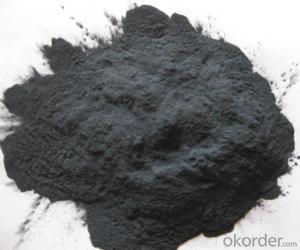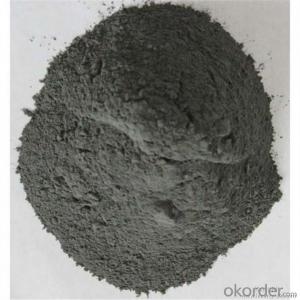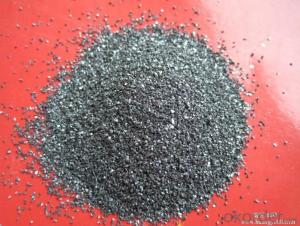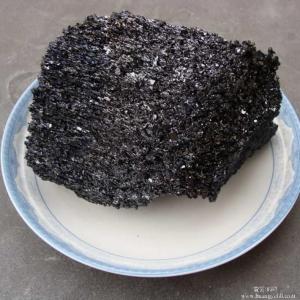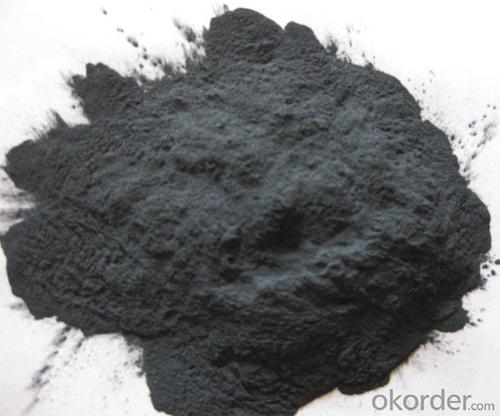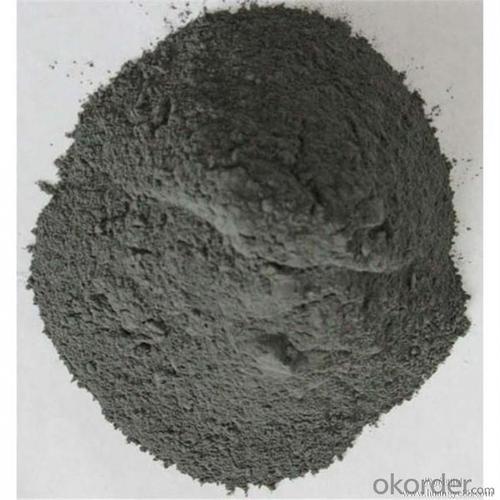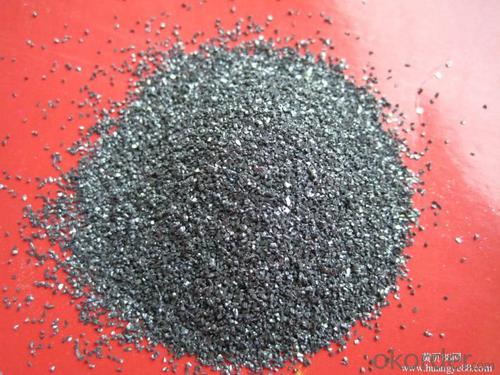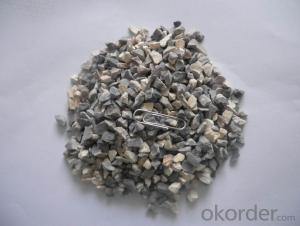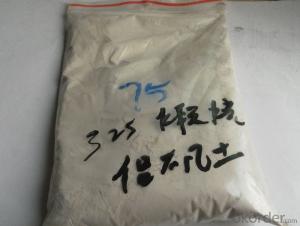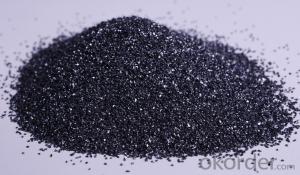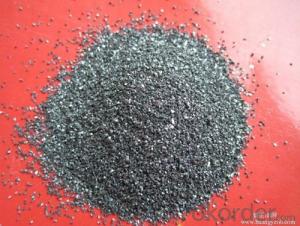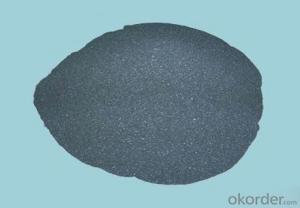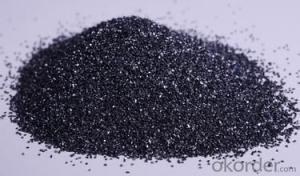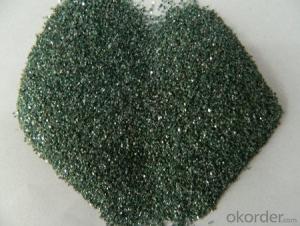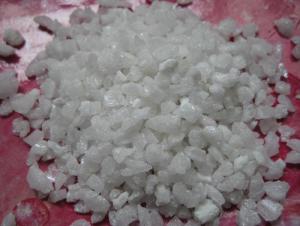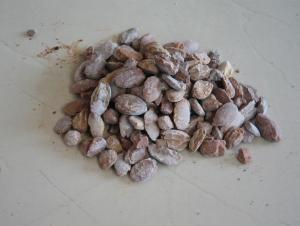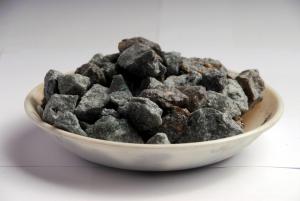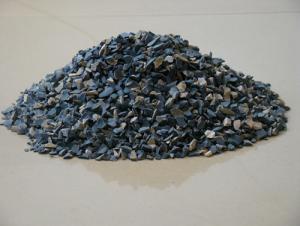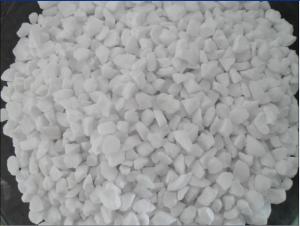Raw Materials for Refractory:China Factory Low Price Silicon Carbide Powder SIC Powder
- Loading Port:
- Tianjin
- Payment Terms:
- TT OR LC
- Min Order Qty:
- 25 m.t.
- Supply Capability:
- 3000 m.t./month
OKorder Service Pledge
OKorder Financial Service
You Might Also Like
China Factory Low Price Silicon Carbide Powder SIC Powder
1.Structure of Silicon Carbide Description
Black Silicon Carbide is produced with high temperature in a electric resistant furnace from a mixture of quartz sand and petroleum coke.
Black silicon carbide is typically used for working on cast iron ,non-ferrous metals, stone, leather, rubber, and other materials which requires sharp cutting characteristics. The mineral is also used widely as a refractory material and metallurgical additive.
2.Main Features of the Calcined Bauxite
Its hardness is between that of fused alumina and synthetic diamond and mechancial intensity of it is also greater than that of fused alumina. It is brittle and very sharp and has a certain degree of electrical and heat conductivity.
3.Main usage of the Calcined Bauxite
1.Grinding non-ferrous materials, rock, stone, leather, rubber, finishing tough and hard materials
2.Bonded abrasive tools, lapping and polishing
3.Widely used as a metallurgical additive and refractory material
4.Refractory
4. Calcined Bauxite Images
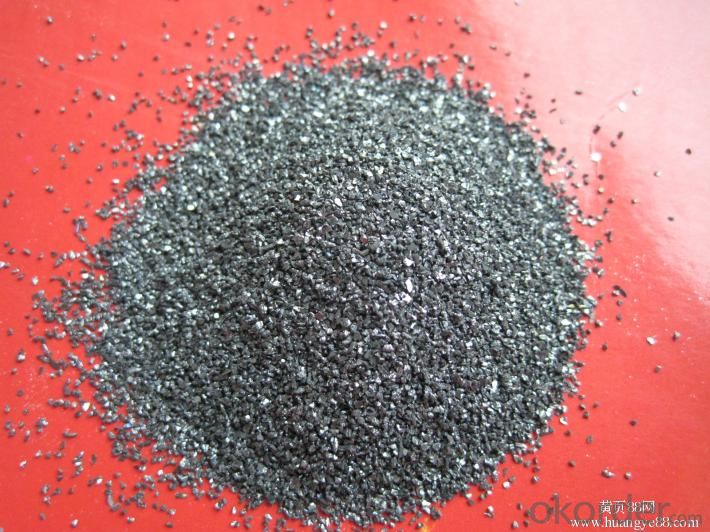
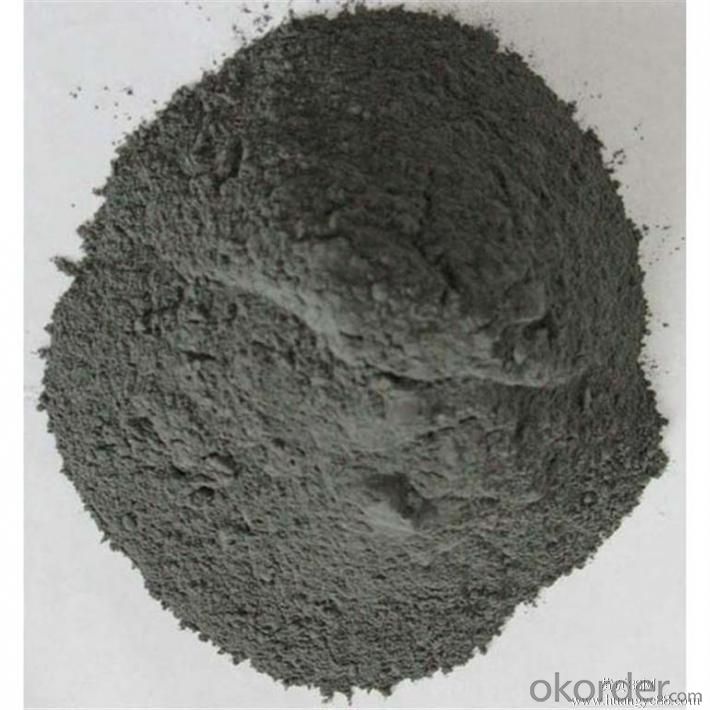
5. Calcined Bauxite Specification
Silicon carbide (SiC) is made from quartz sand and petroleum coke( or coal tar), wood chips as raw material through high temperature smelting in electric resistance furnace.
6.FAQ of Calcined Bauxite
1). Q: Are you a factory or trading company?
A: We are a factory.
2). Q: Where is your factory located? How can I visit there?
A: Our factory is located in Ningxia, China. You are warmly welcomed to visit us!
3). Q: How can I get some samples?
A: Please contact me for samples
- Q: what's the varieties of fire-proof?sealing?material?
- ATD-AB, organic fire-proof caulking, fire retardant bag, fire retardant net, fire retardant ring, fire barrier wrap, fireproofing sealing strip, flexibility fireproofing coiled material, fireproof glue, etc., fireproofing sealing materials currently on the market can be divided into two types, one is the traditional type: flexible organic caulking, WXY-II, fire retardant bag, fire?bulkhead, cable refractory coating; there are some new materials used in large-scale projects: fireproofing coating board system (fireproofing coating board, intumescent fireproof sealing tape, elastic fireproof sealant, Waterborne Fire-retardant Coating), fire retardant module system (fire retardant module, sealing gum, cable refractory coating), fireproofing plaster system (fireproofing plaster, sealing gum, cable refractory coating).
- Q: Where is the distributing center of refractory materials in China?
- Refractories industry is one of the pillar industry of Gongyi City, the city's existing more than 300 refractory enterprises, the annual output value of 10 billion yuan, accounting for three of the city's GDPA share of the domestic market share of about 30% of refractories. Production of stereotypes, not stereotypes of two kinds of aluminum, magnesium, silicon and carbon four series of more than 1000 varieties of products, covering the whole country, and exported to Europe and other regions, is one of the Chinese refractory base. Yongan Road Subdistrict Office area is the center of the hinterland of refractories industry, Yongan is the theme of economic development, Chinese, Gongyi refractory chemical professional market, location, close to the aisle 310, Henan Provincial Highway S31, Yongan road and the construction of the Gong Teng speed transportation is very convenient.There is a good space for development and a relaxed business environment. Very conducive to customer management and development, is conducive to the full enjoyment of preferential policies in Gongyi, backed by trees good shade, head blue sky good development.
- Q: The classification of fire-resistant material
- There are various refractory materials classified according to the chemical properties of material: Min< manufacturing technique: neutral refractory materials, pipes, etc. Standard model: baidu.hiphotos;8 simatic carbon composite refractory material zirconia based refractory material special fire-proof material 6; or a acute angle of 50~70° and material forms. 3.
- Q: Which fire-resistant materials have good viscidity?
- The viscidity of fire-resistant materials is also known as the binding performance of fire-resistant materials. It can be divided into chamotte and chemical binder. Both can work at normal or high temperature. The most commonly used chamotte are soft clay and aluminate cement. The commonly used chemical binders include sodium silicate, phosphoric acid, aluminum sulphate, aluminium phosphate, phenolic resin, etc. Fire resistant material is a complicated and overloaded system and we cannot know its materials and chemical components from the name alone. Both gunning mix and repair mix contain binder components. If they can used after adding water, then they may contain clay or fire resistan aluminum silicate cement.
- Q: Which one is better, fire-resistant wood or steel?
- Rebar would weaken and quickly collapse in the fire, and the fire resistance of a heavy log is much better than steel. In many ways, the fire resistance of a large log is equal to reinforced concrete. The heat transfer capacity of wood is 400 times smaller than steel, 8.5 times smaller than concrete. When burning, wood will form a layer of carbon in the surface, and as long as the cross-section of the timber is over a certain size, this layer of carbon it will become an excellent flame retardant layer to protect the interior of the wood from burning. So the United States and Japan and other European countries allow and encourage the use of wood structure with a large section (beam column of 8 inches or more) to construct public buildings without the need for fire treatment applied to wood surface. I hope my answer will be helpful to you.
- Q: Can anyone say something about what A-level fire-proof decorative material is?
- Now A-level market is very confusing. The major products are material monomer A-level and composite A-level, now a lot of B-level material is wrapped in calcium silicate board. The foam cement overall composite is level A, such as phenolic aldehyde composite, as well as some of the foam paddings, while monomer A-level includes rock wool, ultra-thin insulation panel and the like.. But there are few products with real sound A level qualification. Many manufacturers are playing the edge ball with A-level fire rating examining reports and B-level system detection reports and records, but this situation will not last long, which will soon be clear. I hope the information above can help you. Hope you adopt
- Q: Graphite and other carbon materials may be oxidized to CO or CO2 at high temperatures. But why can they be refractories?
- There is no contradiction for this. Any substance can be combustible, but different materials have different ignition points.There are many types of graphite. Pyrolytic graphite has a much lower ignition point. Therefore, as long as it reaches at a certain temperature, it can convert into graphite. Mostly, in practical applications (such as brake pads will add a certain amount of graphite), graphite is required to have refractoriness of below 1000 ℃. Graphite can serves as both the combustible and refractory material. So, it can be used as a fire-resistant and high-temperature-resisrant material because graphite (lamellar graphite) has a ignition point of at least 3000 degrees in an oxygen free condition. The above information is for reference only and is offered by Xin Ruida Graphite Company.
- Q: What are the requirements when producing fireproof materials by kaolin?
- Kaolin refractories in fact play a role in two aspects, one is to improve the refractoriness, the second is to improve plasticity of the the refractory . Aluminum content the higher the better, of course, but kaolin is not the only material to improve the content of aluminum, using materials that contain higher content of aluminum such as the bauxite chamotte. So the content of kaolin aluminum does not have to be too high. over 38% is fine. viscosity is important and strong viscidityis better without having to add bentonite. Refractoriness above 1400 degrees is enough.
- Q: What are the grades of refractory exterior wall thermal insulation materials?
- Classification of fire rating of extrior thermal insulation materials 1, According to national standard GB8624-97, the combustion performance of building materials are divided into the following grades A level: Incombustible building materials: Materials hardly burn. B1 class: Flame-retardant building materials: Flame-retardant material has good flame resistance. In case of fire in the air or at high temperature, it is difficult to catch fire and the fire will not spread quickly. And when the combustion source is removed, the burning will stop immediately. B2 Class: Combustible building materials: Combustible materials have a certain flame retardancy. In case of fire in the air or at high temperature, it will immediately burst into flames and it is easily to spread fire, such as wooden column, wooden roof truss, wooden beams and wooden stairs, etc. B3 level: Inflammable building materials: It has no flame retardant effect, and it is extremely inflammable, and the risk of fire is high. Classification of exterior wall thermal insulation materials according to fire rating: 1. Thermal insulation materials with A-level combustion performance Rock wool, glass wool, foam glass, foamed ceramic, foam cement, hole-closed perlite, etc. 2, Thermal insulation materials with B1-level combustion performance: Extruded polystyrene board (XPS) after special treatment / polyurethane (PU) after special treatment, phenolic aldehyde, gelatine powder polystyrene granule, and etc. 3. Thermal insulation materials with B2-level combustion performance: Molded polystyrene board (EPS), extruded polystyrene board (XPS), polyurethane (PU), polyethylene (PE), etc.
Send your message to us
Raw Materials for Refractory:China Factory Low Price Silicon Carbide Powder SIC Powder
- Loading Port:
- Tianjin
- Payment Terms:
- TT OR LC
- Min Order Qty:
- 25 m.t.
- Supply Capability:
- 3000 m.t./month
OKorder Service Pledge
OKorder Financial Service
Similar products
Hot products
Hot Searches
Related keywords
